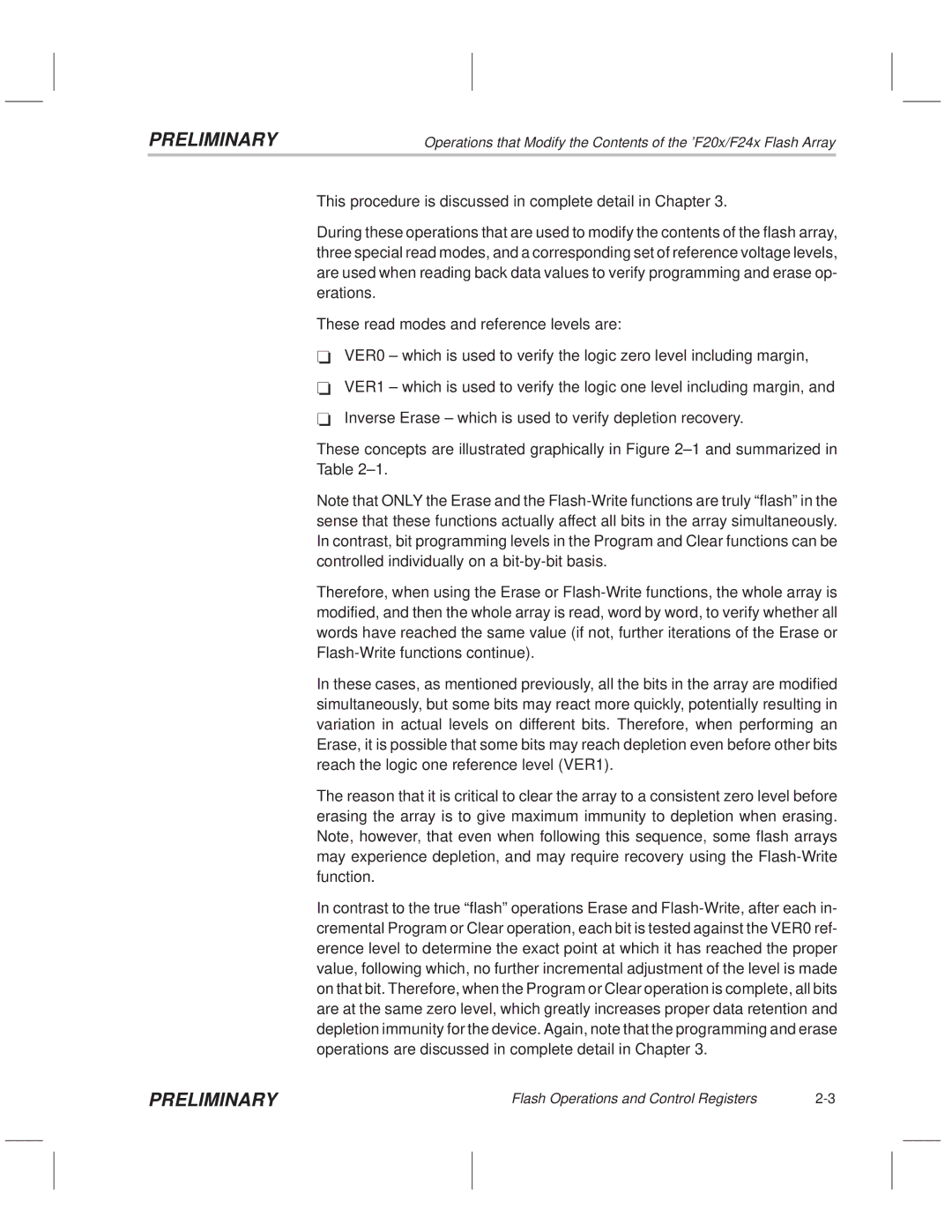
PRELIMINARY
Operations that Modify the Contents of the 'F20x/F24x Flash Array
This procedure is discussed in complete detail in Chapter 3.
During these operations that are used to modify the contents of the flash array, three special read modes, and a corresponding set of reference voltage levels, are used when reading back data values to verify programming and erase op- erations.
These read modes and reference levels are:
-VER0 ± which is used to verify the logic zero level including margin,
-VER1 ± which is used to verify the logic one level including margin, and
-Inverse Erase ± which is used to verify depletion recovery.
These concepts are illustrated graphically in Figure 2±1 and summarized in Table 2±1.
Note that ONLY the Erase and the
Therefore, when using the Erase or
In these cases, as mentioned previously, all the bits in the array are modified simultaneously, but some bits may react more quickly, potentially resulting in variation in actual levels on different bits. Therefore, when performing an Erase, it is possible that some bits may reach depletion even before other bits reach the logic one reference level (VER1).
The reason that it is critical to clear the array to a consistent zero level before erasing the array is to give maximum immunity to depletion when erasing. Note, however, that even when following this sequence, some flash arrays may experience depletion, and may require recovery using the
In contrast to the true ªflashº operations Erase and
PRELIMINARY | Flash Operations and Control Registers |
